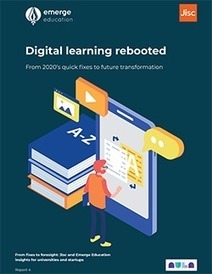COVID-19 has caused the closure of university campuses around the world and migration of all learning, teaching, and assessment into online domains. The impacts of this on the academic community as frontline providers of higher education are profound. In this article, we report the findings from a survey of n = 1148 academics working in universities in the United Kingdom (UK) and representing all the major disciplines and career hierarchy. Respondents report an abundance of what we call ‘afflictions’ exacted upon their role as educators and in far fewer yet no less visible ways ‘affordances’ derived from their rapid transition to online provision and early ‘entry-level’ use of digital pedagogies. Overall, they suggest that online migration is engendering significant dysfunctionality and disturbance to their pedagogical roles and their personal lives. They also signpost online migration as a major challenge for student recruitment, market sustainability, an academic labour-market, and local economies.
Via Elizabeth E Charles



 Your new post is loading...
Your new post is loading...



















Insightful findings re the digital pivot "The impacts of this on the academic community as frontline providers of higher education are profound."